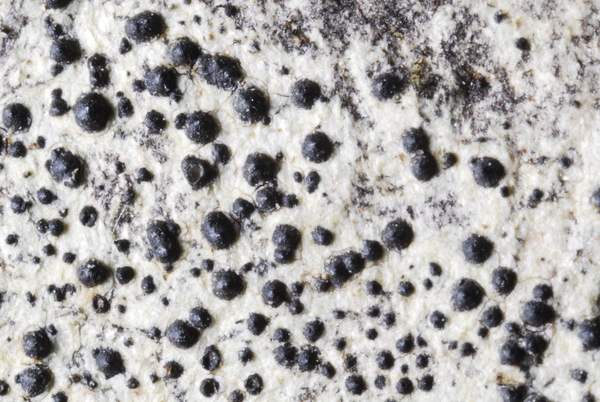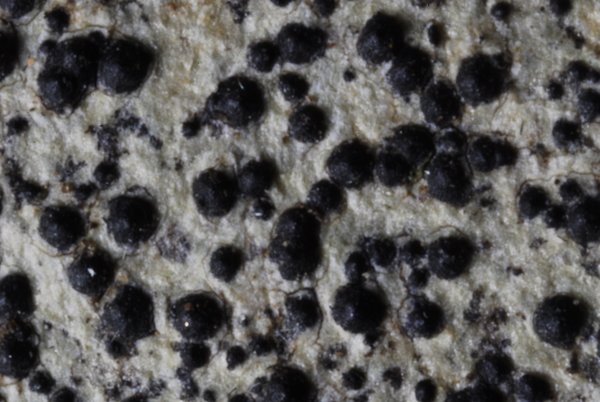Dichoporis ziziphi (A. Massal.) S.H. Jiang, Lücking & Sérus.
in Hongsanan & al., Fungal Divers.: 10.1007/s13225-020-00462-6, 130, 2020. Basionym: Sagedia ziziphi A. Massal. - Miscell. Lichenol., 30: 60, 1856.
Synonyms: Porina schizospora Vain.; Porina ziziphi (A. Massal.) Zahlbr.; Strigula mediterranea Etayo; Strigula ziziphi (A. Massal.) Cl. Roux & Sérus.
Distribution: N - VG (Tretiach & Carvalho 1995, Carvalho 1997), TAA (Roux & Sérusiaux 2004), Lomb (Roux & Sérusiaux 2004). C - Tosc, Laz (Ravera 2006), Abr (Di Santo & Ravera 2012, Corona & al. 2016), Sar (Zedda 2002, Rizzi & al. 2011, Di Nuzzo & al. 2022). S - Pugl (Nimis & Tretiach 1999), Cal (Puntillo 1996, Puntillo & Puntillo 2004), Si.
Description: Thallus crustose, largely endosubstratic, whitish grey to olive-brown, continuous or slightly fissured, to 0.1 mm thick. Perithecia black, (0.2-)0.3-0.4(-0.5) mm across. Involucrellum dark brown, dimidiate; exciple prosoplectenchymatous, colourless to brownish in upper part; hamathecium of slender, thread-like, 1.5-2 μm thick paraphysoids which are mostly simple, and only rarely branched and anastomosing, except where adjacent to the exciple. Asci 8-spored, cylindrical to narrowly clavate, bitunicate-fissitunicate, shortly stalked at base, with a more or less bilobed foot, the apex thickened into a tholus, with a narrow ocular chamber, I-. Ascospores 1-septate and strongly constricted at septum, hyaline, subfusiform, 18-28 x 3.5-5.5 μm, separating into two part-spores before or during dehiscence of the ascus, the part-spores 9-15 x 3-5.5 μm. Pycnidia often of two types. Macropycnidia black, 0.12-0.2(-0.3) mm across; macroconidia laterally inserted on the conidiogenous cell, the point of insertion thus subterminal, 1-septate, with a gelatinous appendage, 8-11.5 x (2.5-)3-4.5 μm, each cell with a large, persistent oil droplet. Micropycnidia similar to macropycnidia but 0.1-0.18 mm across; microconidia fusiform to subfusiform, 2.5-5 x 1-2 μm. Photobiont trentepohlioid. Spot tests: thallus K-, C-, KC-, P-. Chemistry: thallus without lichen substances. Note: a mild-temperate to Mediterranean-Atlantic lichen found on bark of broad-leaved trees in open woodlands (e.g. on Quercus, Castanea); probably more widespread, especially in Southern Italy, but not common. The record of Strigula taylorii s.lat. from Sicily by Nimis & al. (1994) refers to this species.
Growth form: Crustose
Substrata: bark
Photobiont: Trentepohlia
Reproductive strategy: mainly sexual
Most common in areas with a humid-warm climate (e.g. most of Tyrrenian Italy)
Commonnes-rarity: (info)
Alpine belt: absent
Subalpine belt: absent
Oromediterranean belt: absent
Montane belt: absent
Submediterranean belt: extremely rare
Padanian area: absent
Humid submediterranean belt: rare
Humid mediterranean belt: very rare
Dry mediterranean belt: absent
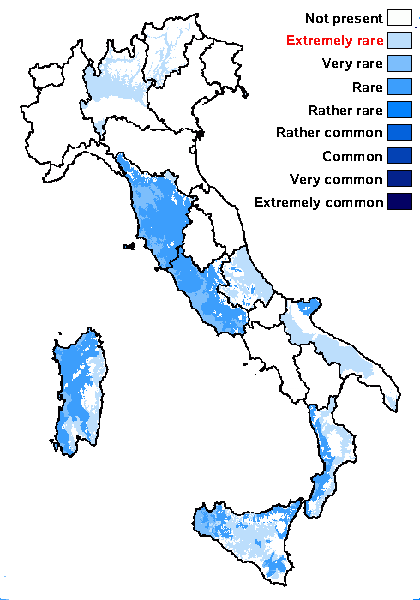
Predictive model
Herbarium samples
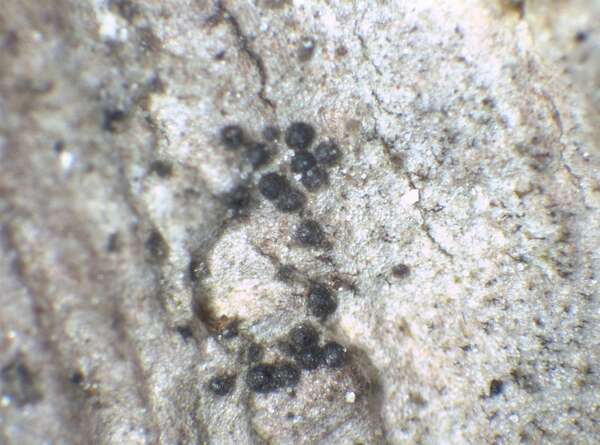

P.L. Nimis; Owner: Department of Life Sciences, University of Trieste
Herbarium: TSB (20131)
2003/03/17
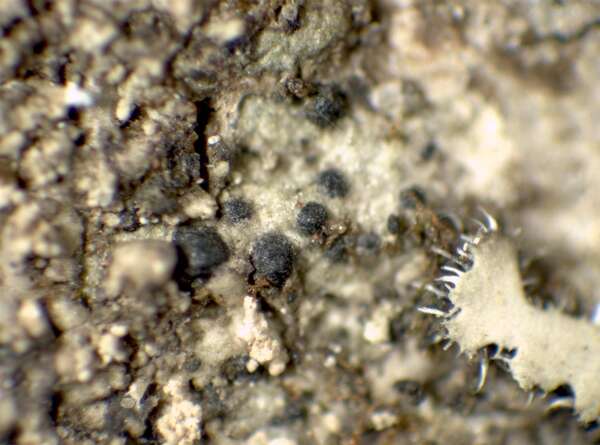

P.L. Nimis; Owner: Department of Life Sciences, University of Trieste
Herbarium: TSB (22869)
2001/12/11
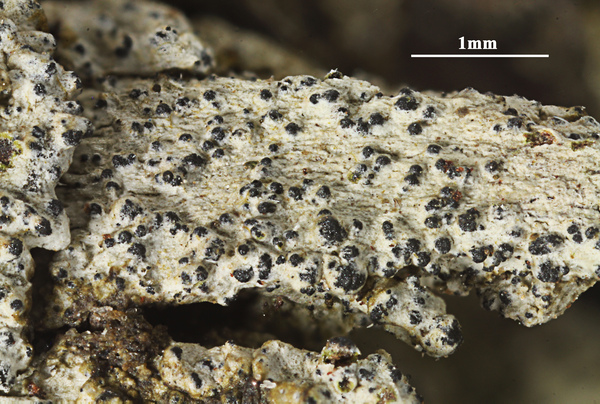

Felix Schumm - CC BY-SA 4.0
[ABL21567], Brazil, Sergipe, Aracaju, São Cristóvão, UFS campus, on tree bark in university campus. 10 m, 10°55’ S, 37°06’ W. Leg. M. Cáceres & A. Aptroot (no 21567), 7.4.2014, det. A. Aptroot, 2014
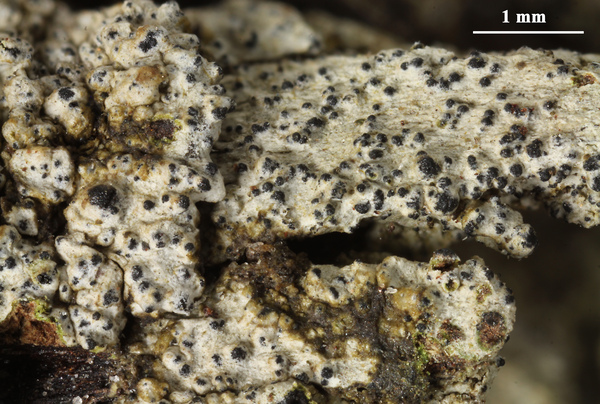

Felix Schumm - CC BY-SA 4.0
[ABL21567], Brazil, Sergipe, Aracaju, São Cristóvão, UFS campus, on tree bark in university campus. 10 m, 10°55’ S, 37°06’ W. Leg. M. Cáceres & A. Aptroot (no 21567), 7.4.2014, det. A. Aptroot, 2014
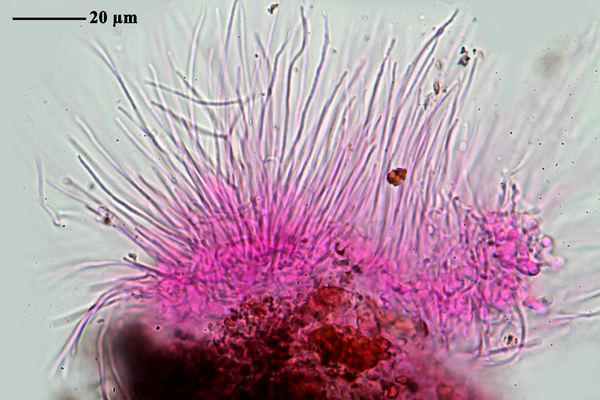

Felix Schumm - CC BY-SA 4.0
[ABL21567], Brazil, Sergipe, Aracaju, São Cristóvão, UFS campus, on tree bark in university campus. 10 m, 10°55’ S, 37°06’ W. Leg. M. Cáceres & A. Aptroot (no 21567), 7.4.2014, det. A. Aptroot, 2014
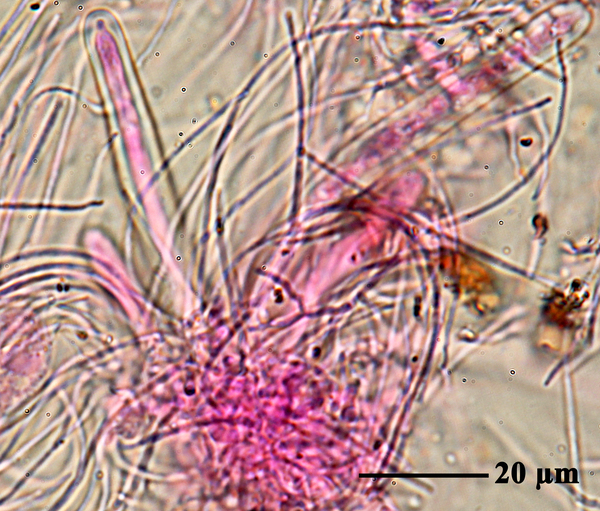

Felix Schumm - CC BY-SA 4.0
[ABL21567], Brazil, Sergipe, Aracaju, São Cristóvão, UFS campus, on tree bark in university campus. 10 m, 10°55’ S, 37°06’ W. Leg. M. Cáceres & A. Aptroot (no 21567), 7.4.2014, det. A. Aptroot, 2014
Growth form: Crustose
Substrata: bark
Photobiont: Trentepohlia
Reproductive strategy: mainly sexual
Most common in areas with a humid-warm climate (e.g. most of Tyrrenian Italy)
Commonnes-rarity: (info)
Alpine belt: absent
Subalpine belt: absent
Oromediterranean belt: absent
Montane belt: absent
Submediterranean belt: extremely rare
Padanian area: absent
Humid submediterranean belt: rare
Humid mediterranean belt: very rare
Dry mediterranean belt: absent

Predictive model
| Herbarium samples |


P.L. Nimis; Owner: Department of Life Sciences, University of Trieste
Herbarium: TSB (20131)
2003/03/17


P.L. Nimis; Owner: Department of Life Sciences, University of Trieste
Herbarium: TSB (22869)
2001/12/11


Felix Schumm - CC BY-SA 4.0
[ABL21567], Brazil, Sergipe, Aracaju, São Cristóvão, UFS campus, on tree bark in university campus. 10 m, 10°55’ S, 37°06’ W. Leg. M. Cáceres & A. Aptroot (no 21567), 7.4.2014, det. A. Aptroot, 2014


Felix Schumm - CC BY-SA 4.0
[ABL21567], Brazil, Sergipe, Aracaju, São Cristóvão, UFS campus, on tree bark in university campus. 10 m, 10°55’ S, 37°06’ W. Leg. M. Cáceres & A. Aptroot (no 21567), 7.4.2014, det. A. Aptroot, 2014


Felix Schumm - CC BY-SA 4.0
[ABL21567], Brazil, Sergipe, Aracaju, São Cristóvão, UFS campus, on tree bark in university campus. 10 m, 10°55’ S, 37°06’ W. Leg. M. Cáceres & A. Aptroot (no 21567), 7.4.2014, det. A. Aptroot, 2014


 INDEX FUNGORUM
INDEX FUNGORUM
 GBIF
GBIF
 DOLICHENS
DOLICHENS

